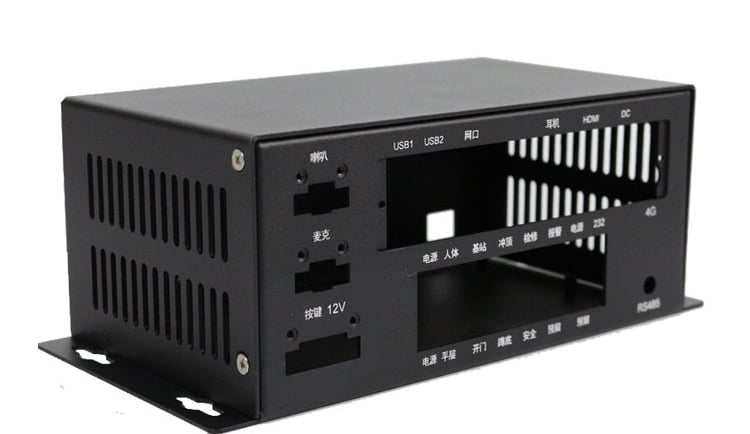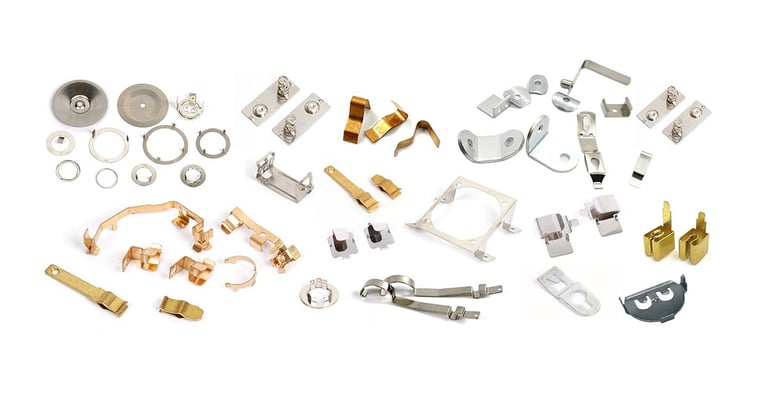Metal Parts in Consumer Electronics: Beyond the Surface
A comprehensive guide exploring the critical role of metal parts in consumer electronics, covering material selection, thermal management, precision engineering, sustainability, and future trends. Designed for product developers and inventors seeking innovative strategies to optimize electronic device performance through advanced metallic solutions.
1/17/20252 min read


Introduction
Metal components have become the silent heroes of modern consumer electronics, transforming from simple structural elements to sophisticated performance enablers. As technology continues to push boundaries, understanding the intricate world of metal parts has become crucial for product developers, inventors, and startups seeking to innovate in an increasingly competitive landscape.
1. Material Selection: The Foundation of Innovation
Selecting the right metal is a critical first step in electronic product design. Each metal brings unique characteristics that can make or break a product's performance:
Aluminum: Lightweight, excellent thermal conductor, corrosion-resistant
Copper: Superior electrical conductivity, used in heat sinks and electrical connections
Stainless Steel: High strength, corrosion resistance, ideal for structural components
Magnesium: Lightest structural metal, excellent for portable devices
Titanium: High strength-to-weight ratio, biocompatible, used in premium devices
Developers must consider multiple factors in terms of material selection:
Thermal conductivity
Weight and density
Manufacturing cost
Corrosion resistance
Electromagnetic properties
Ease of machining and fabrication
2. Thermal Management Strategies
Thermal management represents one of the most critical challenges in electronic design. As devices become more powerful and compact, heat dissipation becomes paramount. Below lists some advanced cooling techniques:
Precision Heat Sinks: Engineered with complex geometries to maximize surface area
Thermal Interface Materials: Improving heat transfer between components
Integrated Cooling Designs: Leveraging metal's natural thermal properties
Active vs. Passive Cooling: Balancing performance and energy efficiency
3. Precision Engineering and Miniaturization
The trend toward smaller, more complex electronic devices demands unprecedented manufacturing precision. The key manufacturing innovations include:
CNC Machining: Achieving micron-level tolerances
Metal Injection Molding: Creating intricate, small-scale metal parts
Additive Manufacturing: 3D printing complex metal geometries
Laser Cutting: Enabling ultra-precise component fabrication
4. Sustainability and Environmental Considerations
Modern metal part design must balance performance with environmental responsibility. Here are some sustainable approaches:
Design for easy disassembly
Utilize recycled metal materials
Implement low-energy manufacturing processes
Develop circular economy strategies for metal components
5. Performance Enhancement Technologies
Surface Treatments
Anodizing: Enhancing corrosion resistance and aesthetic appeal
Electroplating: Improving wear resistance and conductivity
Ceramic Coatings: Providing extreme durability
Diamond-Like Carbon (DLC): Offering superior friction reduction
Electromagnetic Shielding
Effective EMI/RFI protection is crucial in an increasingly wireless world. Strategic metal selection and integrated shielding designs can prevent electromagnetic interference.


6. Cost Optimization Strategies
Balancing performance and affordability remains a constant challenge for product developers. Consider the following optimization techniques in for metal parts in your product development:
Comprehensive material cost analysis
Design for manufacturability
Bulk manufacturing negotiations
Advanced simulation tools for predictive design
7. Future Trends and Emerging Technologies
Cutting-Edge Developments
Nanomaterials with extraordinary properties
Metamaterials with programmable characteristics
Self-healing metal composites
Biomimetic design approaches inspired by natural structures
Actionable Takeaways for Product Developers
Holistic Approach: Consider multiple factors beyond immediate performance requirements
Invest in Simulation: Leverage advanced modeling tools before physical prototyping
Prioritize Sustainability: Design with material lifecycle in mind
Stay Informed: Continuously explore emerging material technologies
Collaborate: Work closely with materials science experts and advanced manufacturers
Conclusion
The world of metal parts in consumer electronics is dynamic and complex. Success requires a nuanced understanding of materials, manufacturing processes, and emerging technologies. By adopting a strategic, forward-thinking approach, developers can create products that are not just technologically advanced, but also sustainable and cost-effective.
The future of consumer electronics lies in the hands of those who can masterfully integrate metal components—transforming raw materials into intelligent, high-performance solutions.
